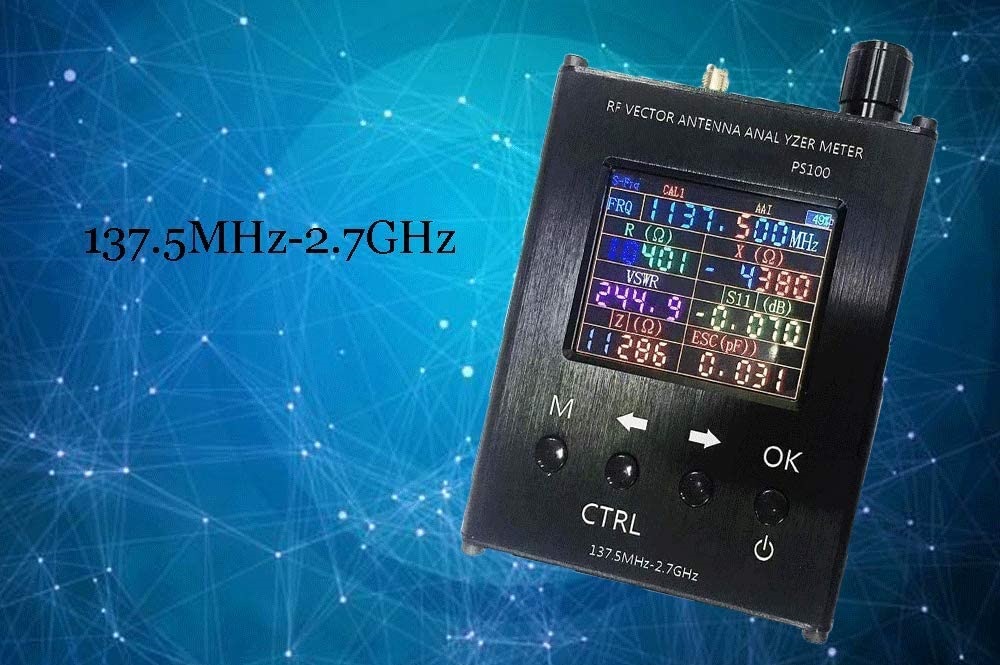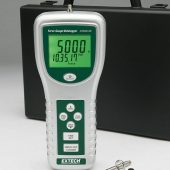Knowing how to measure standing wave ratio (SWR) is important for anyone who uses or tinkers around with radio whether it’s CB radio, ham radio, or a walkie talkie.
By knowing the SWR of your radio system, you can make adjustments to the feed line or antenna to reduce standing waves. This improves transmission, improves energy efficiency, and protects your radio from damage.
In this guide, we explain what standing waves are, how to measure standing wave ratio, and what different measurements mean.
What Are Standing Waves and Why Are They Bad?

Standing waves are phenomena observed in different kinds of medium including air, water, and sound. They are stationary waves that occur when two waves travelling in opposite directions meet.
In radios, standing waves occur in the feed line that transfers radio frequency (RF) from the radio’s transmitter to its antenna.
For a radio to have the best transmission, it’s essential to match as closely as possible the impedance of the antenna and the feed line. This ensures that all the RF from the transmitter reaches the antenna and gets transmitted.
If there’s a significant mismatch, some of the radio frequency travelling to the antenna gets reflected back to the transmitter.
It meets RF coming from the transmitter, causing standing waves.
Standing waves do not transfer energy efficiently, thus resulting in poor transmission and wasted energy. They can also cause the transmitter to overheat and malfunction.
So the goal of any radio operator is to eliminate or reduce these standing waves. The first step is to measure the standing wave ratio, which tells you how mismatched the antenna and feed line are in terms of impedance.
What is Meant by Standing Wave Ratio?
A standing wave ratio or SWR is the ratio between the highest radio frequency voltage along the feed line to the lowest RF voltage.
This corresponds to the amplitudes of the standing wave at its antinode (maximum point) and node (minimum point).
Because the SWR measures voltage, it is sometimes referred to as VSWR or voltage standing wave ratio.
If you want a deeper explanation of standing wave ratio, here’s a great video with all the technical aspects clearly explained.
What is the Equation For Standing Wave Ratio?
The simplest formula for a standing wave is Γ = Vr / Vf.
The standing wave ratio is represented by the reflection coefficient Γ (a greek letter). Vr is the reflected wave while Vf is the forward wave.
There are many other equations and formulas for standing waves. You can see them on this page if you want to dig deeper.
How to Measure Standing Wave Ratio?
You could use an impedance analyser to measure the difference in impedance between the feed line and antenna, and use that to calculate SWR.
A standing wave ratio meter is much easier to use, especially for non-technical radio operators.
Some CB and ham radios come with built-in SWR meters. But a dedicated SWR meter is more accurate.
An SWR meter will have two connections; one for the antenna and another for the transmitter. Plug in the right leads into the connections.
Tip: For best results, conduct the SWR test in an open area a good distance from trees, buildings and other interfering structures.
Turn your radio to Channel 1, and then turn on the SWR meter. For a digital meter, you just press the power button. For analogue meters, you toggle the switch to the FWD mark.
The next step is to calibrate the meter.
Some modern SWR digital meters do not need any calibration. Skip this step if you have such a meter.
But if you have an analogue meter, you’ll need to flip the switch to the CAL mark then turn the dial to move the needle to the end of the red section on the right.
Note: Advanced SWR meters have several power levels. Select the highest power level that’s closest to your transmitter’s output power.
Now you are ready to take a reading.
Key your radio’s mic by pressing and holding the transmitter button. Do not release that button as you take the SWR measurement.
If you have a newer digital SWR meter, it’ll immediately show a reading on the screen. Note it down.
For an analogue SWR meter, flip the switch to REF (while still keying the mic) and watch where the needle rests. Note down the reading.
Let go of the transmitter button, then repeat the whole process for Channel 40.
The purpose of testing the first and last channel is to make sure your antenna has good output strength on all channels.
If you need more help measuring your radio’s SWR, watch the video below.
What is a Good SWR Ratio?
Ideally, the SWR meter should indicate a reading of 1.5 or less. This is a 1.5:1 ratio. The closer the needle or reading is to 1 (1:1 ratio), the better.
In most cases, even a reading under 2 is okay. Low power radios have more tolerance. The higher the output power, the lower the SWR needs to be.
If you get a reading higher than 1.5 or 2, you’ll need to adjust your antenna to improve transmission efficiency. Usually, the way to do this is to adjust the length of the antenna.
There are also some advanced tuning equipment that can bring down your SWR close to 1. But you’ll usually not go lower than 1.2. In any case, you probably won’t notice much difference by going from 1.5 to 1.
You should also check if there are any electrical problems such as shorting with the antenna as those can also affect its impedance.
If the antenna is old or damaged, you should probably replace it.
Note: If you get an SWR reading higher than 2.5, stop using your radio to transmit until you diagnose the problem and fix it. Continuing to transmit with a high SWR will likely damage your radio transmitter.


